Black and white cats can come in many breeds, sizes, and patterns! In fact, most known cat breeds can have black and white fur, from the well-known British shorthair to more exotic varieties like the Persian and Japanese bobtail breeds. Below, we’ll be covering 15 different breeds that can have black and white fur coloring. Some breeds have short hair, some have long, while others have unique textures and curl patterns to their fur like the Cornish Rex! Read on to take a closer look.
1. Sphynx
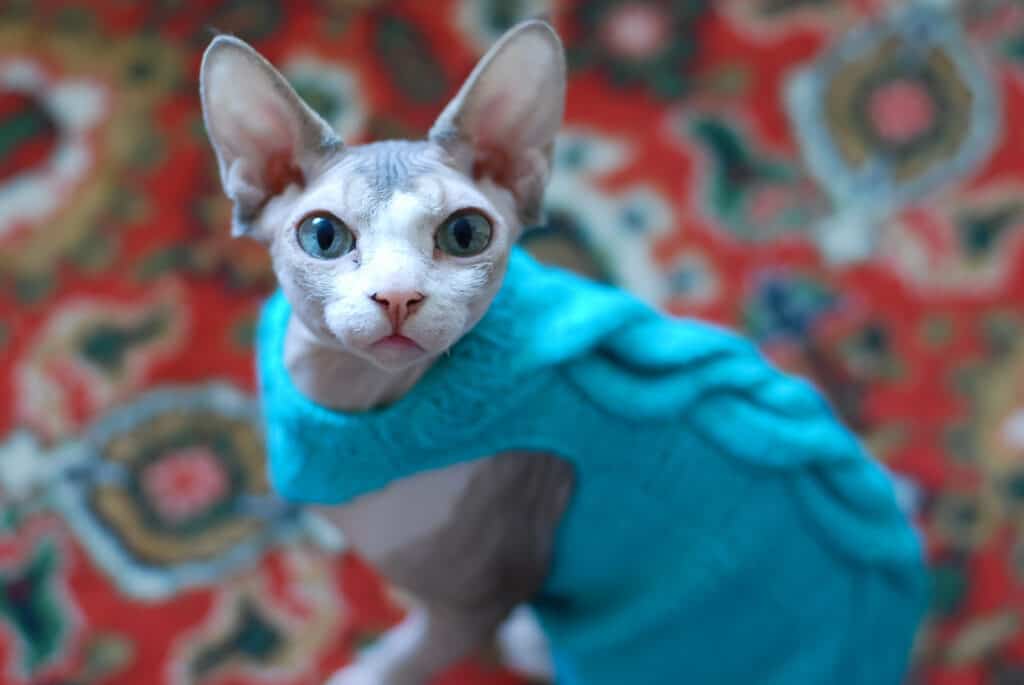
Hairless breeds like Sphynx cats are extra sensitive to cold temperatures and need plenty of sweaters to keep them warm.
©iStock.com/OlgaChan
While most Sphynx cats have little to no hair on their bodies, they still can have patterning on their skin where their fur would normally be! This unique breed was first developed in the 1960s and remains incredibly popular today, particularly among pet owners who love cats but don’t love cleaning up cat hair. According to the International Cat Association, Sphynx cats have tall, long, and thin yet muscular bodies, large eyes, and triangle-shaped heads. Their ears often have a very small amount of hair inside them, along with a soft downy coat on the surface of the ear.
2. Oriental

The Oriental Shorthair breed was bred from the Siamese breed in the 1970s.
©iStock.com/VittoriaChe
The Oriental cat is somewhat similar in appearance to the aforementioned Sphynx due to its rather lanky body and very large ears and eyes. The breed was developed from the Siamese breed in the early 1970s. They are available in both long and short hair varieties and can have a wide range of coat colors and patterns, including black and white! In addition to their distinct body type and appearance, Oriental cats are known for their highly curious, intelligent, and vocal temperament.
3. Manx

Max cats have short, bobbed tails by default.
©Atsupriatna24/Shutterstock.com
The Manx breed is easily recognizable thanks to its adorably short, bobbed tail. This unique trait is the result of a natural genetic mutation. This breed has existed since the 1800s, and the first official breed standard for it was released in 1903. Manx cats are available in a wide range of colors and patterns, including black and white, with solid white coloring being the rarest of all. Other distinct features include its large, round head and elongated back legs. Notably, Manx cats always have short hair. The breed’s long-haired variant, the Cymric, is considered a separate breed.
4. Maine Coon

The patterns of Maine Coon cats can vary, but they generally include black and white.
©Guanaco – Public Domain
The Maine Coon is notable for being one of the largest and oldest cat breeds in North America. It’s also Maine’s official state cat! Beloved for its calm, affectionate, and inquisitive temperament, the breed has existed since the late 1700s. However, its exact origins aren’t certain. Although all individuals have long, dense, water-resistant coats, their coat colors can vary wildly. Black and white Maine Coon cats can have many different patterns, from the popular tuxedo to more irregular bicolor and even tri-color variations.
5. Japanese Bobtail

The Japanese Bobtail breed likely originated in Japan in the 17th century.
©iStock.com/fuiyau yap
Similar to the Manx, the Japanese bobtail breed has a distinctively bobbed tail. Most historians believe the breed originated in Japan in the 1600s. According to the breed standard, the typical Japanese bobtail is a medium-sized cat with long legs, a triangular head, a broad muzzle, and a clearly visible yet short, bobbed tail. It is available in both long and short-haired varieties, though they can have a wide range of coat colors and patterns. Notably, the short-haired variant is low-shedding, making it a good option for pet owners who don’t want to deal with a lot of cat hair.
6. Persian (Modern and Traditional)
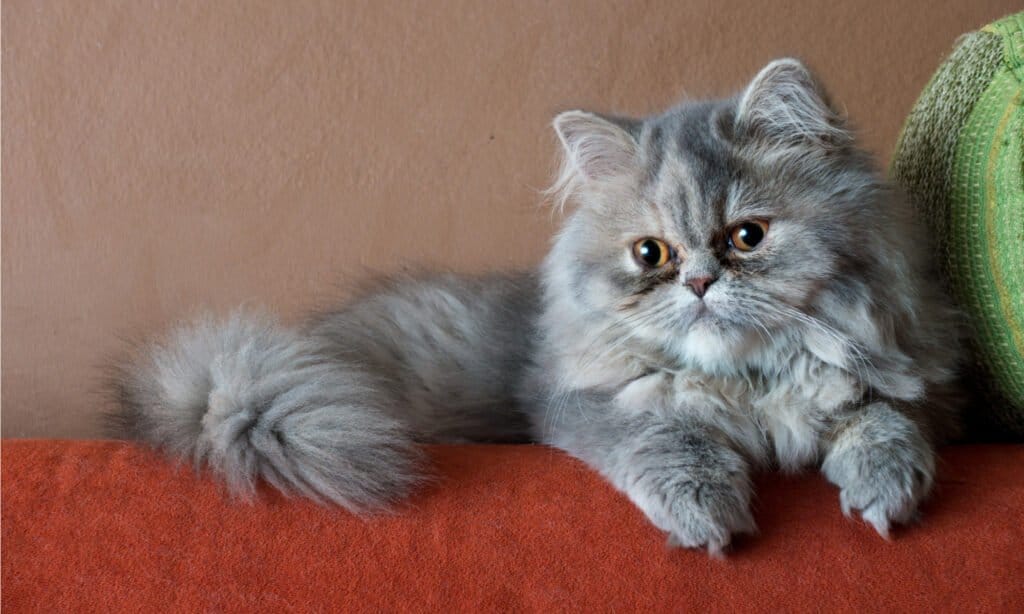
The patterns and colors of Persian cats can vary dramatically between each cat.
©Valerio Pardi/Shutterstock.com
The Persian cat most of us know today actually exists in two main variants: traditional and modern. The modern version has a flat, brachycephalic muzzle and is the result of a genetic mutation of the traditional version that occurred in the 1950s. The traditional, by comparison, has a much less extreme-looking face. Both have very rounded heads, short, wide-set ears, and long, luxurious fur. These cats are also both available in just about any coat pattern or color you could imagine, including black and white!
7. Cornish Rex
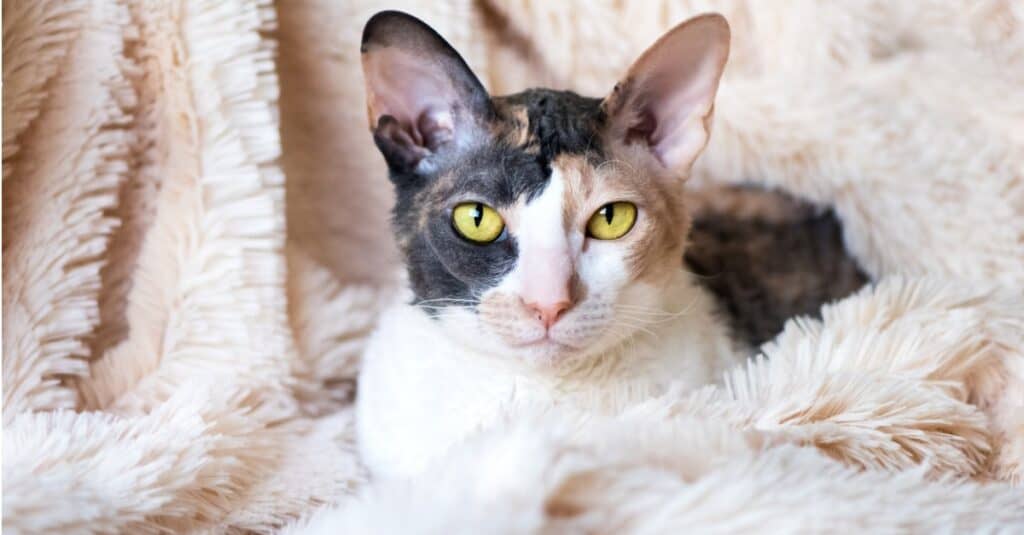
The fur of a Cornish Rex cat is fine and short.
©iStock.com/rozmarina
The Cornish Rex is another breed famous for its lack of fur. Rather than the typical fur coat present on most cat breeds, the Cornish Rex has a very fine, short coat of downy hair. This downy coat can present in various colors and patterns, with the bicolor tuxedo pattern being especially common. The breed is a result of a natural genetic mutation that occurred in a litter of kittens born on a farm in the United Kingdom in the 1950s. According to the breed standard, the ideal Cornish Rex has a long, lean body, a narrow, triangular face, and very tall, alert ears.
8. British Shorthair
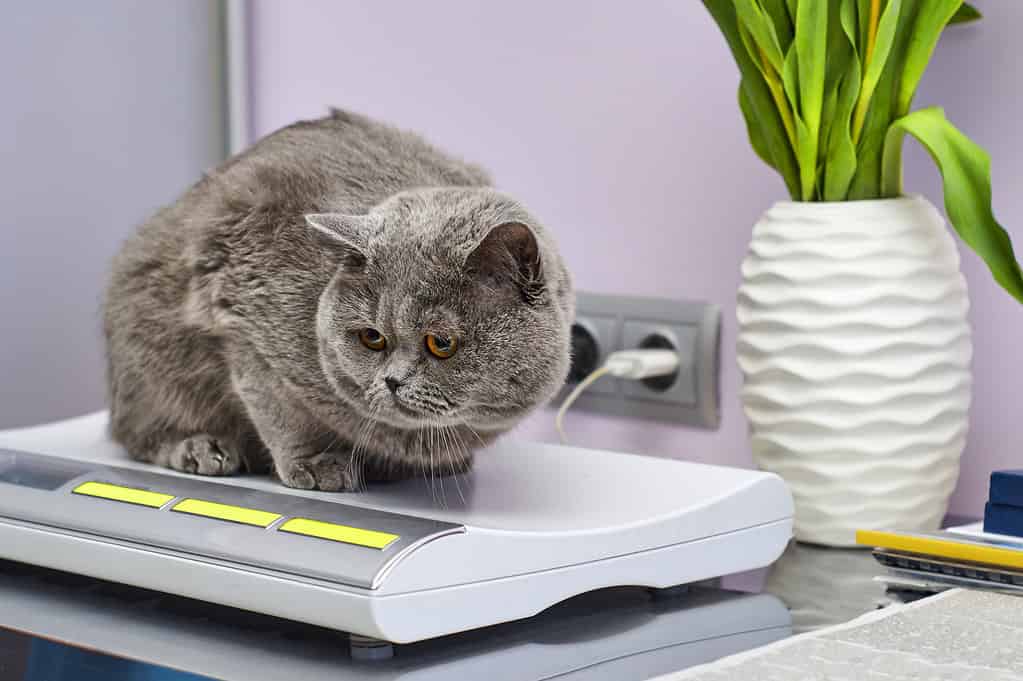
Most British shorthair cats have a grayish-blue coat, but black and white are possible variants in the breed.
©iStock.com/Dzurag
Although most people think of a cool-toned, grayish-blue coat when it comes to the British shorthair breed, it can have many different colors and patterns. Black and white British shorthair cats are actually fairly common. Interestingly, this breed is one of the oldest cat breeds in the world! Its exact origins are disputed, but it likely originated in the first century AD, when Roman people relied on cats to scare off mice and other pests. Over time, these cats were bred with other European wildcats. Eventually, the cats developed into a robust, stocky breed with thick, short hair ideal for a cool and wet climate.
9. Munchkin
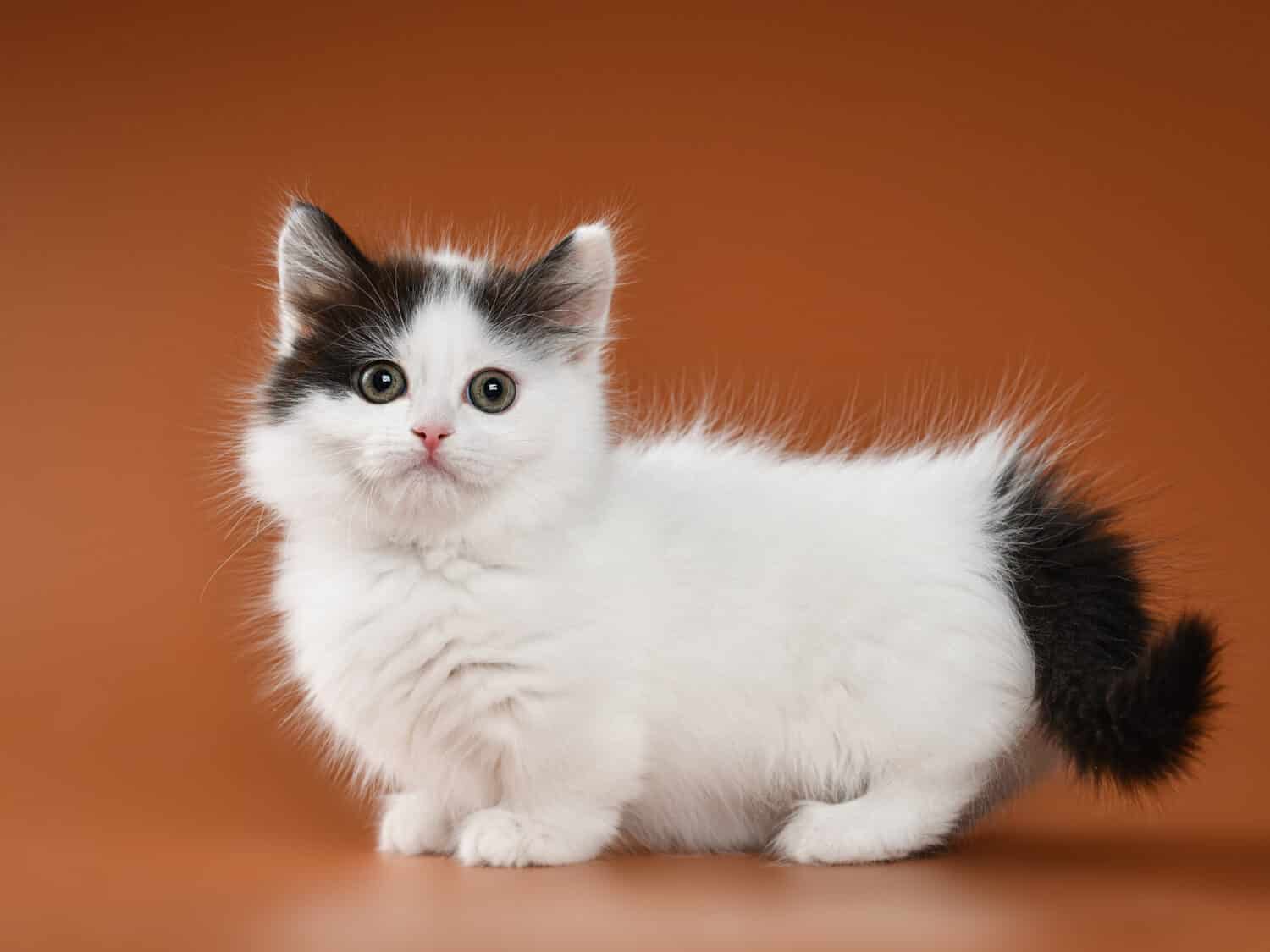
Short, stubby legs distinguish Munchkin cats from other breeds.
©MDavidova/Shutterstock.com
True to its name, the Munchkin breed is unique for its short, stubby legs. This trait is the result of a natural genetic mutation. Despite having unusually small legs, though, the rest of its body is only slightly smaller than average. The breed was first developed in the early 1990s, with the International Cat Association officially recognizing it in 1997. This cat’s medium-length, extra-soft coat is available in many colors and patterns, including black and white.
10. American Curl
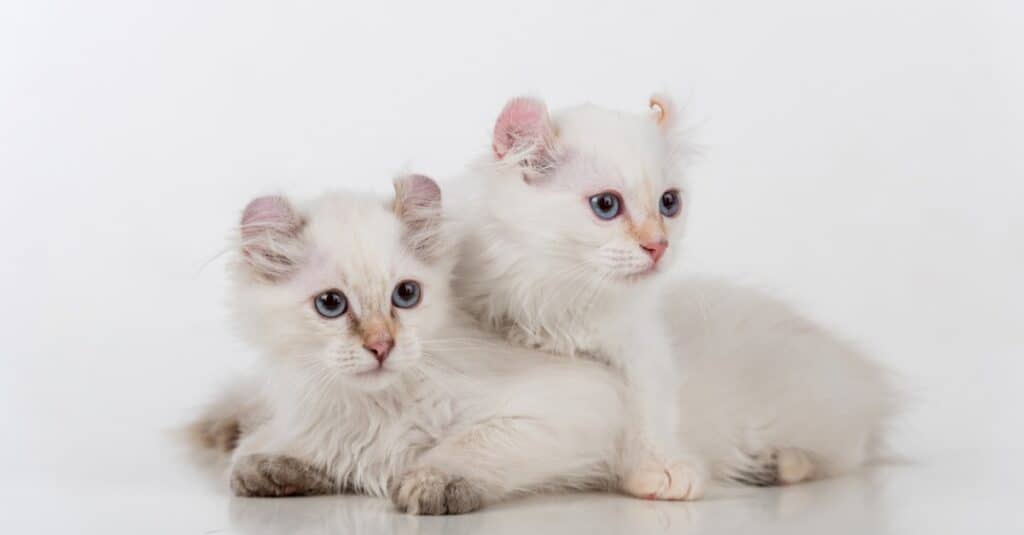
The American curl stands out because of its curled ears.
©photosounds/Shutterstock.com
The American curl’s breed name doesn’t refer to its coat but rather its unusually-shaped, outward-curling ears. Bizarrely, the first documented American curl was a pregnant stray cat taken in by a family in California in 1981. The cat gave birth to a litter of cats with the same curled ears, and they became the ancestors of today’s American curls. This medium-sized breed can have both long and short hair, and it can present in many unique colors and patterns. All American curl cats are born with normal ears that gain their distinctive curl within 48 hours of being born. If you’re interested in buying or adopting an American curl of your own, keep in mind they are one of the most expensive cat breeds!
11. Turkish Angora
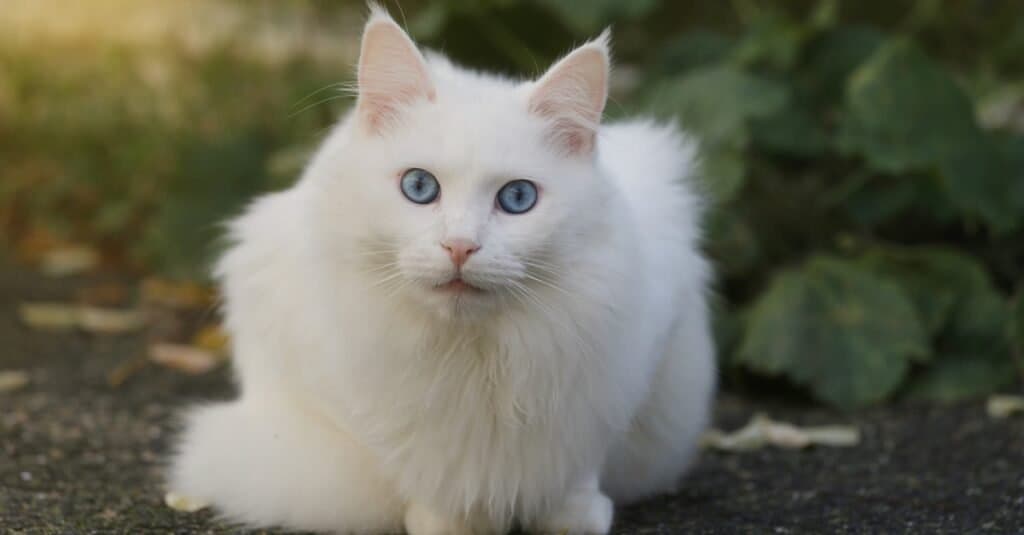
The Turkish Angora breed has a fluffy, smooth coat of fur.
©love pattern/Shutterstock.com
Originating in Turkey in the 17th century, the Turkish Angora has an especially silky-smooth coat, a very fluffy tail, and a long, slender body. While solid white is the most common and well-known variety with this cat breed, many coat colors and patterns are possible, including black and white. They can also have various eye colors, with different-colored (heterochromatic) eyes occurring more often than in other breeds. Its temperament tends to be highly energetic, playful, intelligent, and affectionate.
12. Cymric/Long-Haired Manx
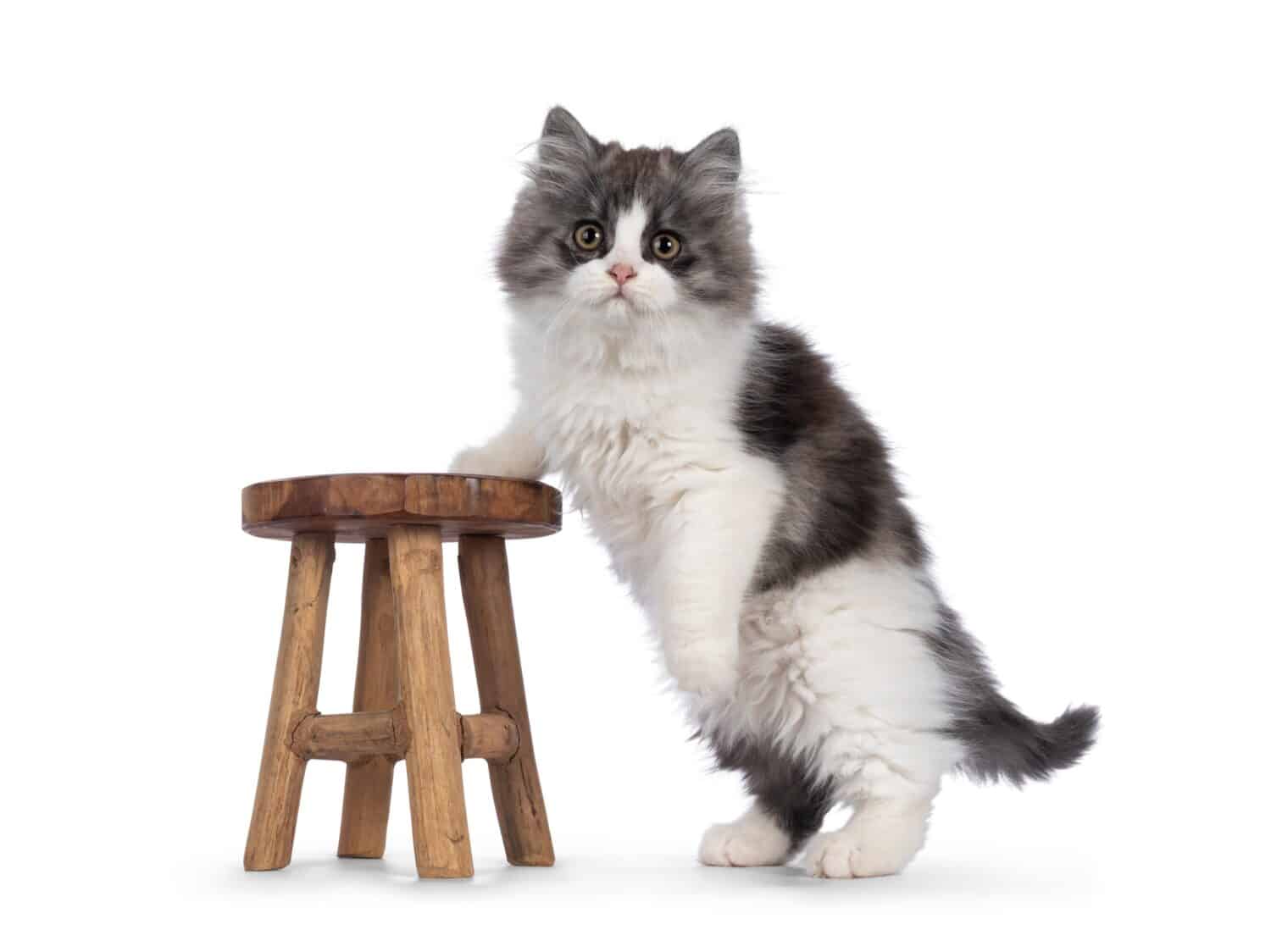
The Cymric breed is a long-haired variant of the Manx breed.
©Nynke van Holten/Shutterstock.com
The Cymric breed is the long-haired version of the aforementioned Manx. Aside from having much longer fur, the two breeds are otherwise the same, with many different coat colors and patterns being possible. Like the Manx, it originated on the Isle of Man due to a natural genetic mutation. In the 1960s, cat breeders began breeding them intentionally. The International Cat Association recognizes the breed as a variant of the Manx, though some other associations and experts view the two as distinct breeds.
13. Exotic Shorthair
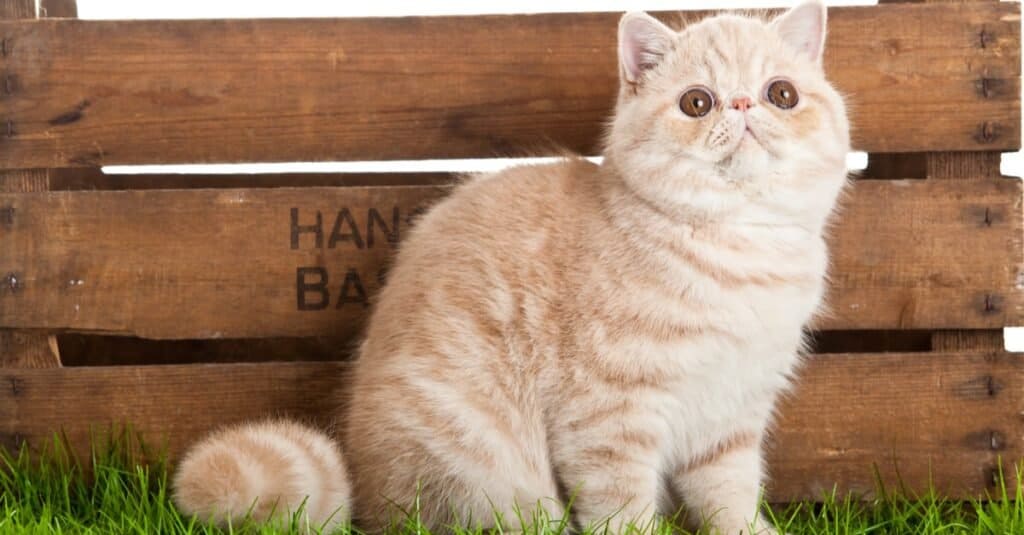
The face of exotic shorthair cats is similar to the modern Persian cat.
©Ewa Studio/Shutterstock.com
The exotic shorthair is a cross between the Persian and American shorthair breeds. It was developed in the late 1950s as a short-haired alternative to the high-shedding, high-maintenance Persian. Like the modern Persian, it has an extremely flat, brachycephalic face, a round head, and short, wide-set ears. Many coat colors and patterns are possible, with black and white exotic shorthair cats being fairly common. The Cat Fanciers’ Association first officially recognized the breed in 1967.
14. Scottish Fold

The Scottish fold is one of the most expensive cat breeds.
©iStock.com/lafar
Unlike the American curl breed, whose ears curl outward, the Scottish fold’s ears fold inward. As its name implies, the first Scottish fold was a barn cat in Scotland with a genetic mutation that caused its ears to fold over. The cat, Susie, later gave birth to two kittens, who both had the folded-ear trait. These kittens went on to be the ancestors of the modern-day Scottish fold breed. Though some organizations have officially recognized it in the past, many will not allow them to be displayed in shows currently due to certain health issues associated with the breed. Scottish fold cats can have various coat colors and patterns, including black and white.
15. Foldex/Exotic Fold
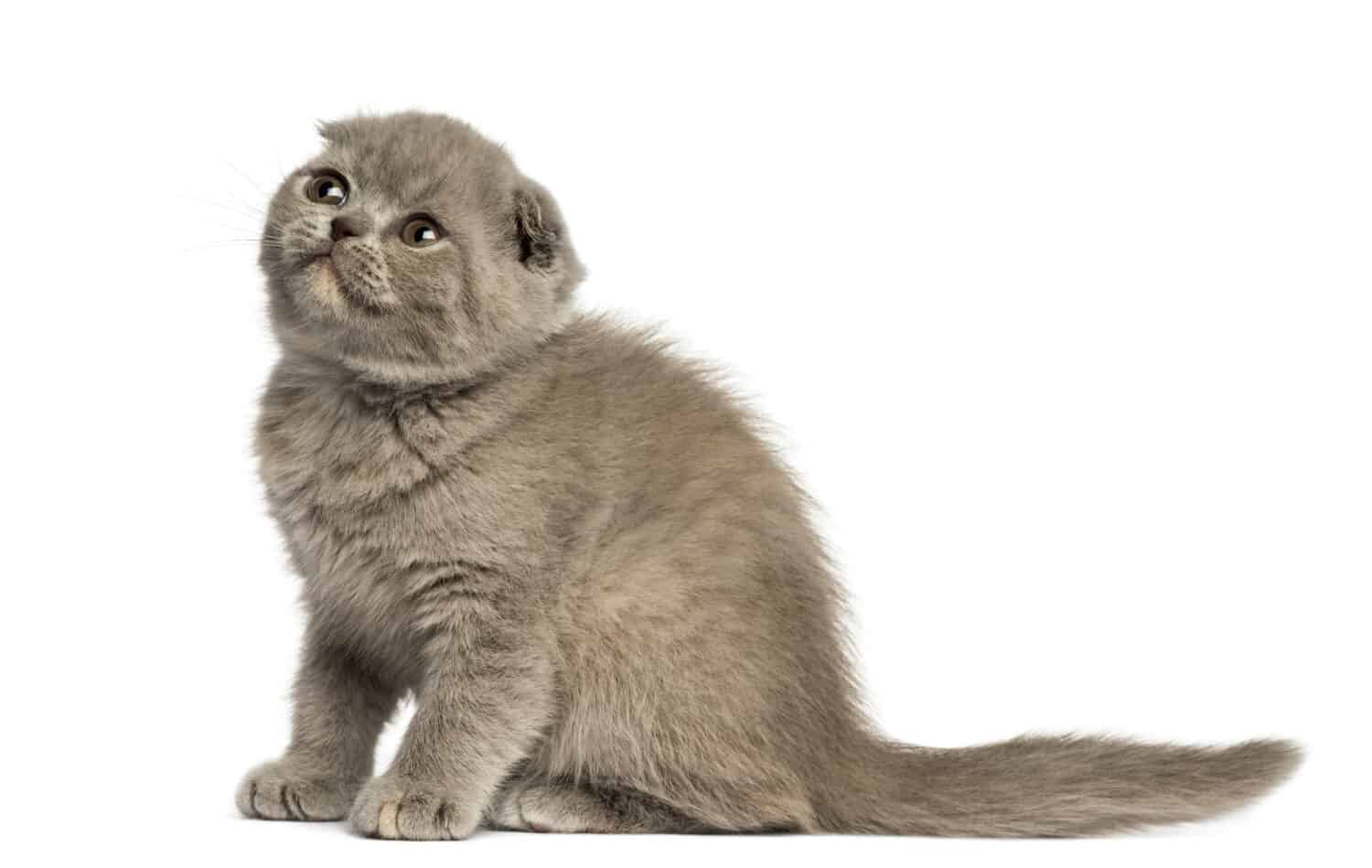
Image: Eric Isselee, Shutterstock
©Eric Isselee/Shutterstock.com
This more recent breed is an interesting combination of the Scottish fold and exotic shorthair varieties. As you’d probably expect, traits from both parent breeds are present in this crossbreed, most notably the Scottish fold’s folded ears and the exotic shorthair’s flat face and round head. The Foldex was first displayed at a cat show in Quebec, Canada, in 1995. However, the Canadian Cat Association didn’t officially recognize it until 2006. Like its parent breeds, Foldex cats can have nearly any type of coat color and pattern, including black and white.
The photo featured at the top of this post is © iStock.com/Magui-rfajardo
Thank you for reading! Have some feedback for us? Contact the AZ Animals editorial team.






